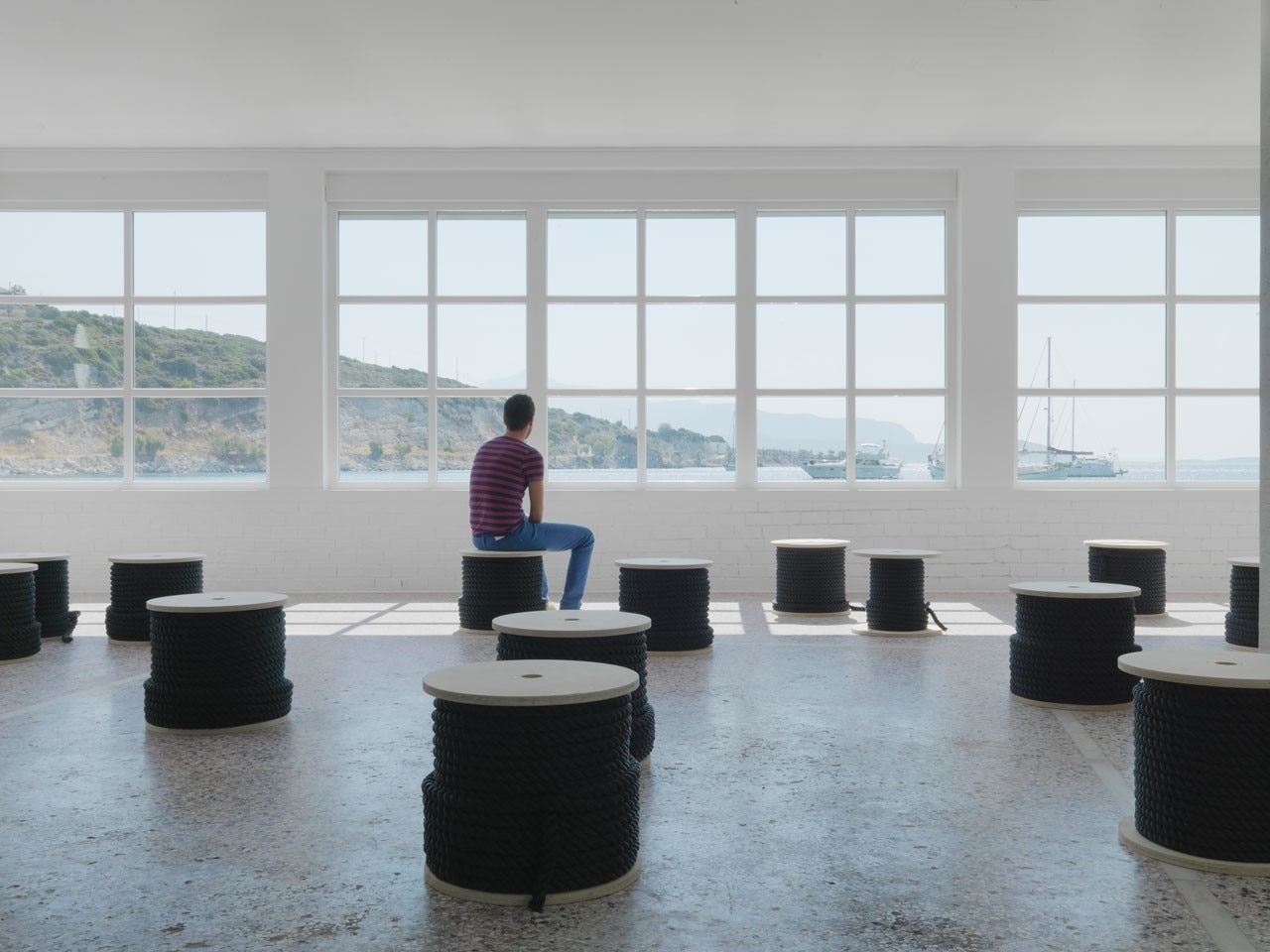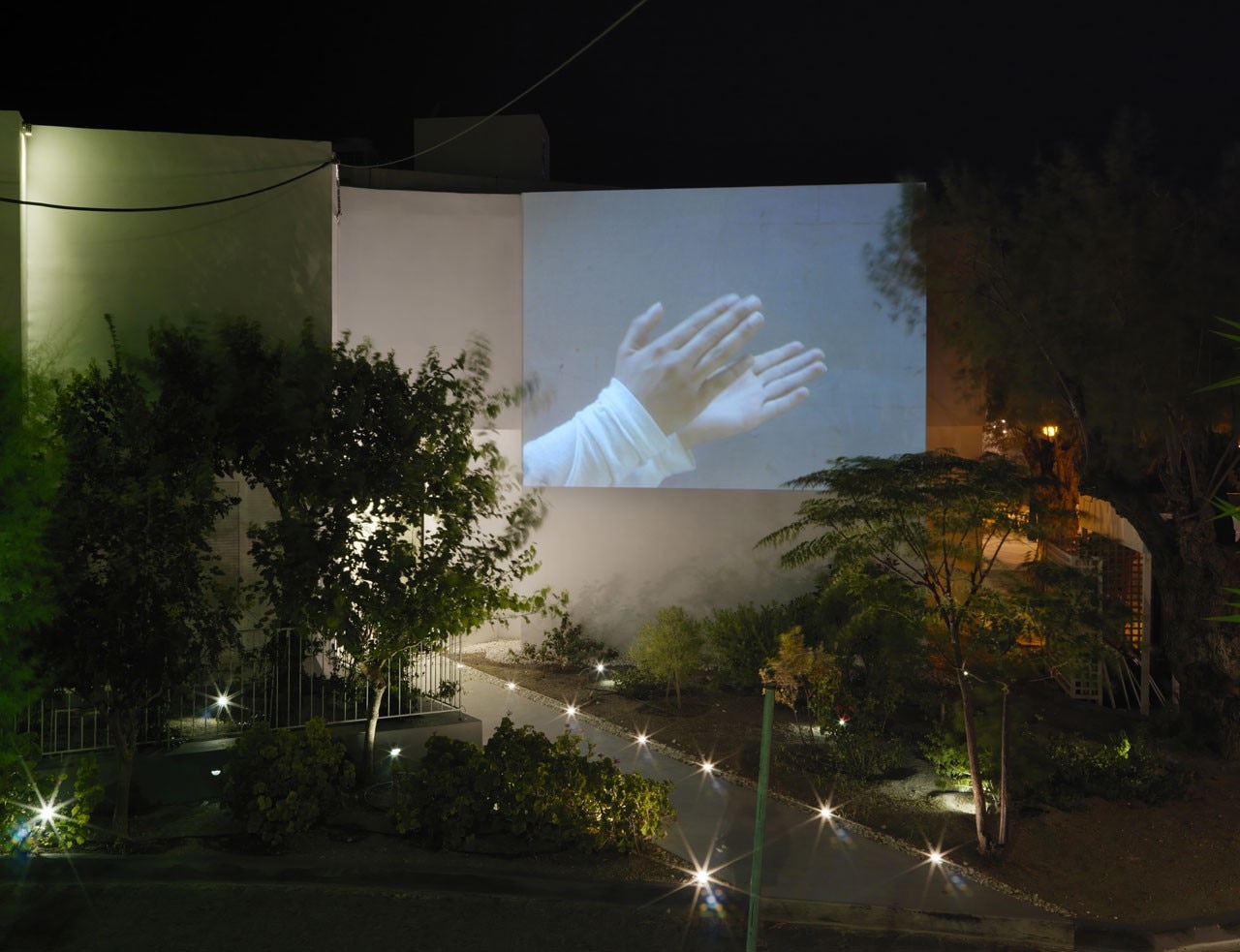
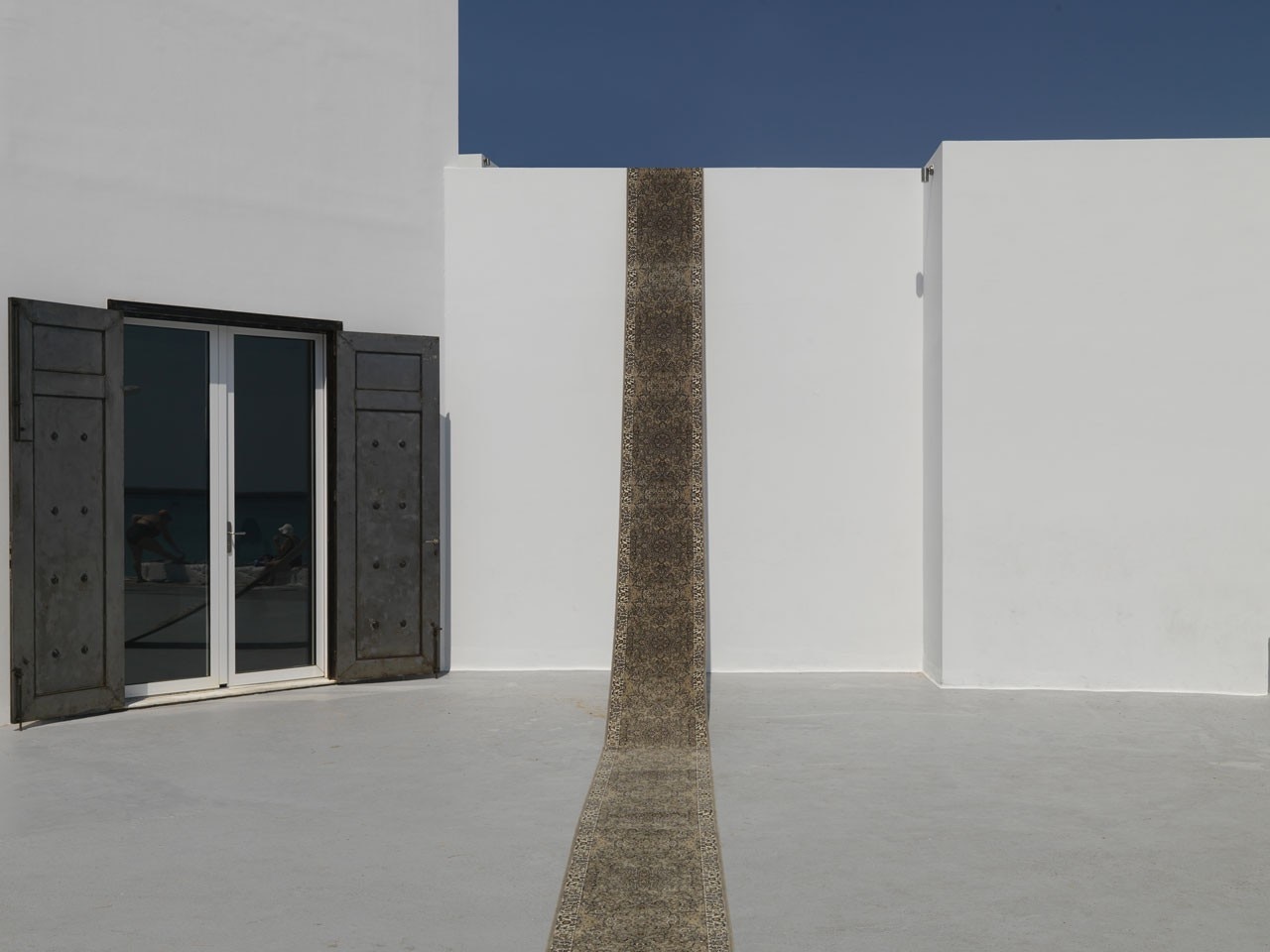
It is with this framing that an art centre which occupies the former premises of a hotel has the occasion to deeply explore the relations between host and guest, between inviting and receiving, between occupation and hospitality. Interestingly, a part of the hotel’s old function was preserved as to accommodate a series of rooms to host artists and other associated professionals, who have the rare privilege (and upmost cinematic experience) of sleeping inside an art gallery. The entire configuration of the edifice was also maintained: a longitudinal, low structure that stretches itself in front of the Pythagorion’s pier, halfway between the port of and the tiny but densely-crowded Remataki beach, which can be observed from the large windows of the main exhibition room. The project, done by local architects Penny Petrakou and Stelios Loulourga, stands out for its simplicity and for the revision of its previous function, a true choice of adapting without making major alterations to the original architectonic form. In the inside it is structured around two main alleys that are accessible from the lobby, and which define a bifurcated organization of the exhibition space.
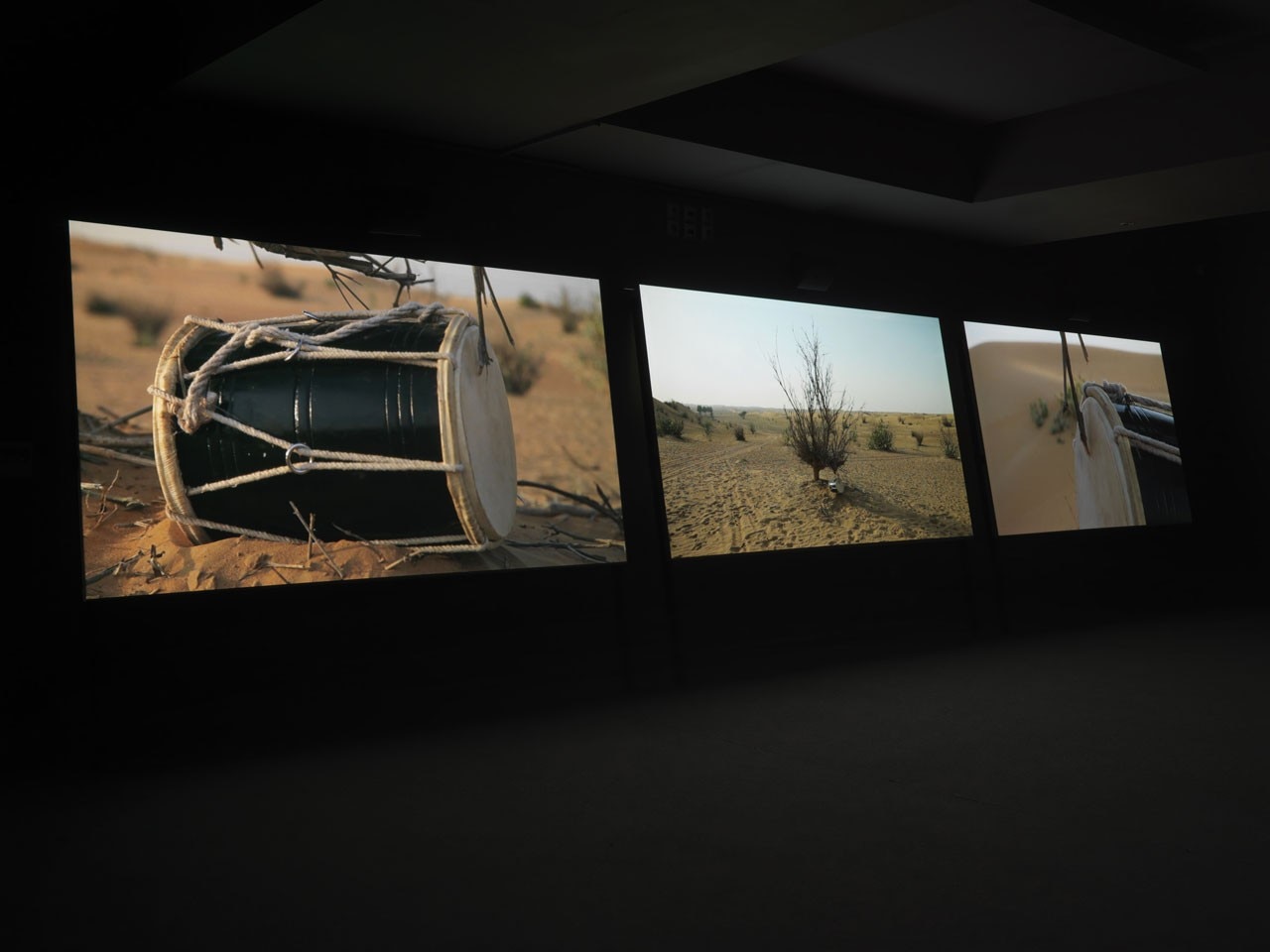
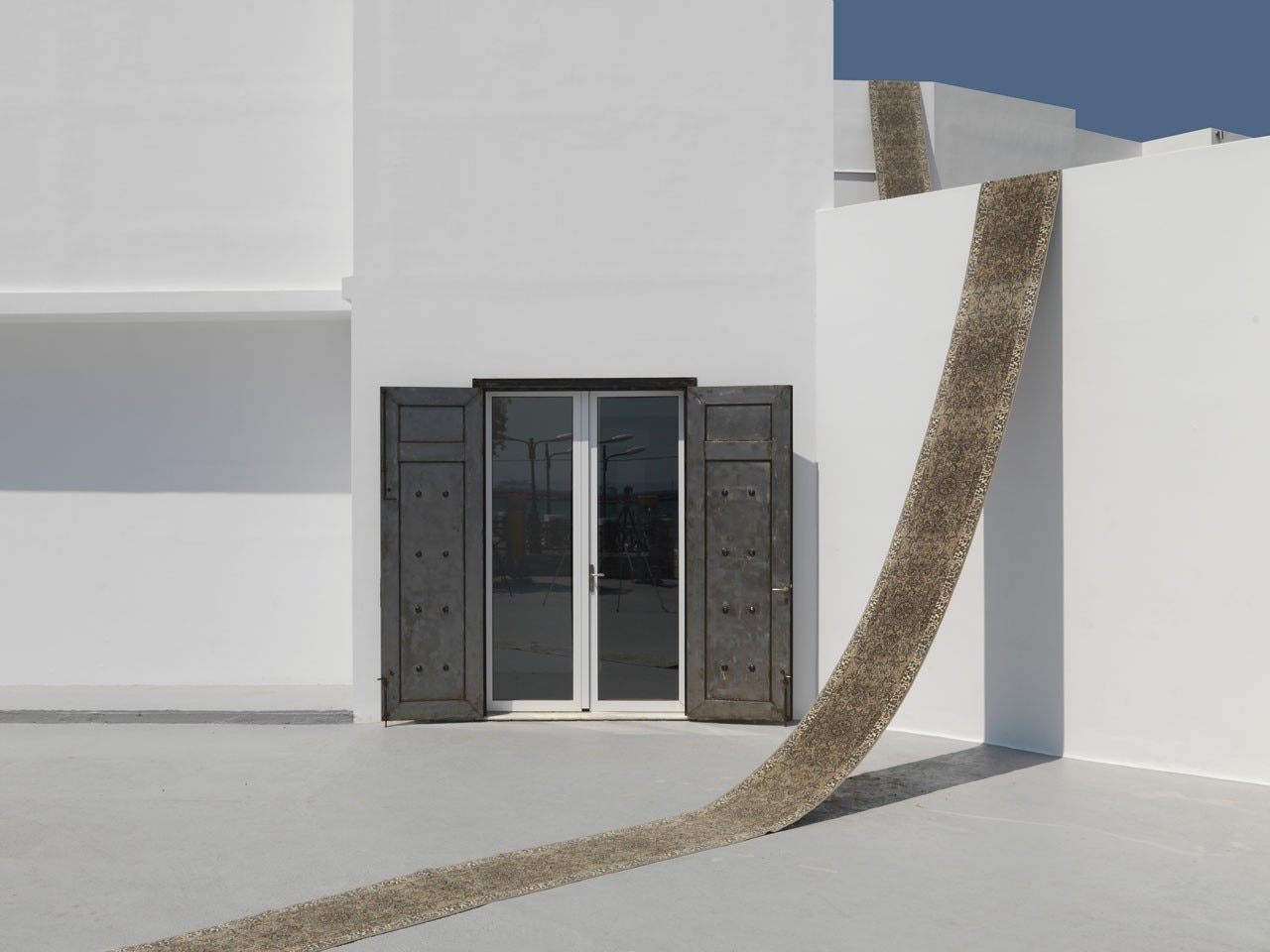
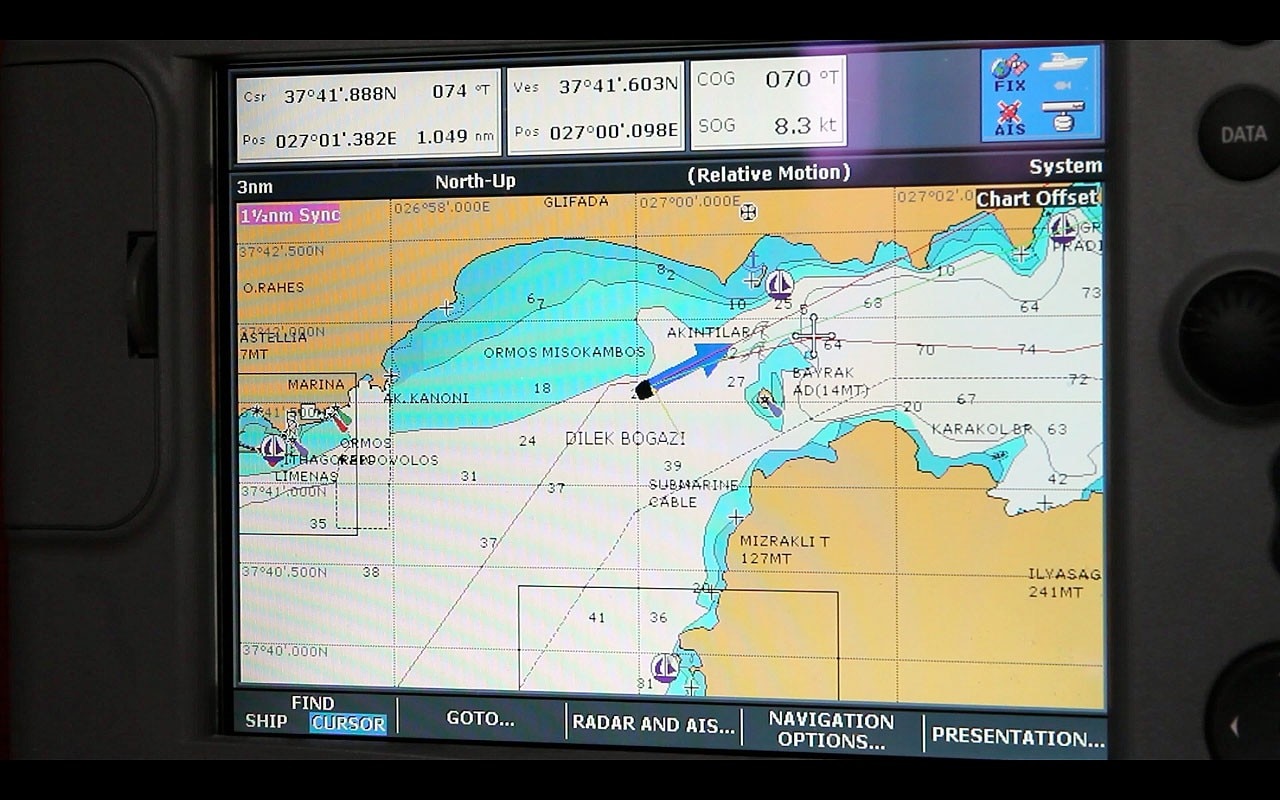
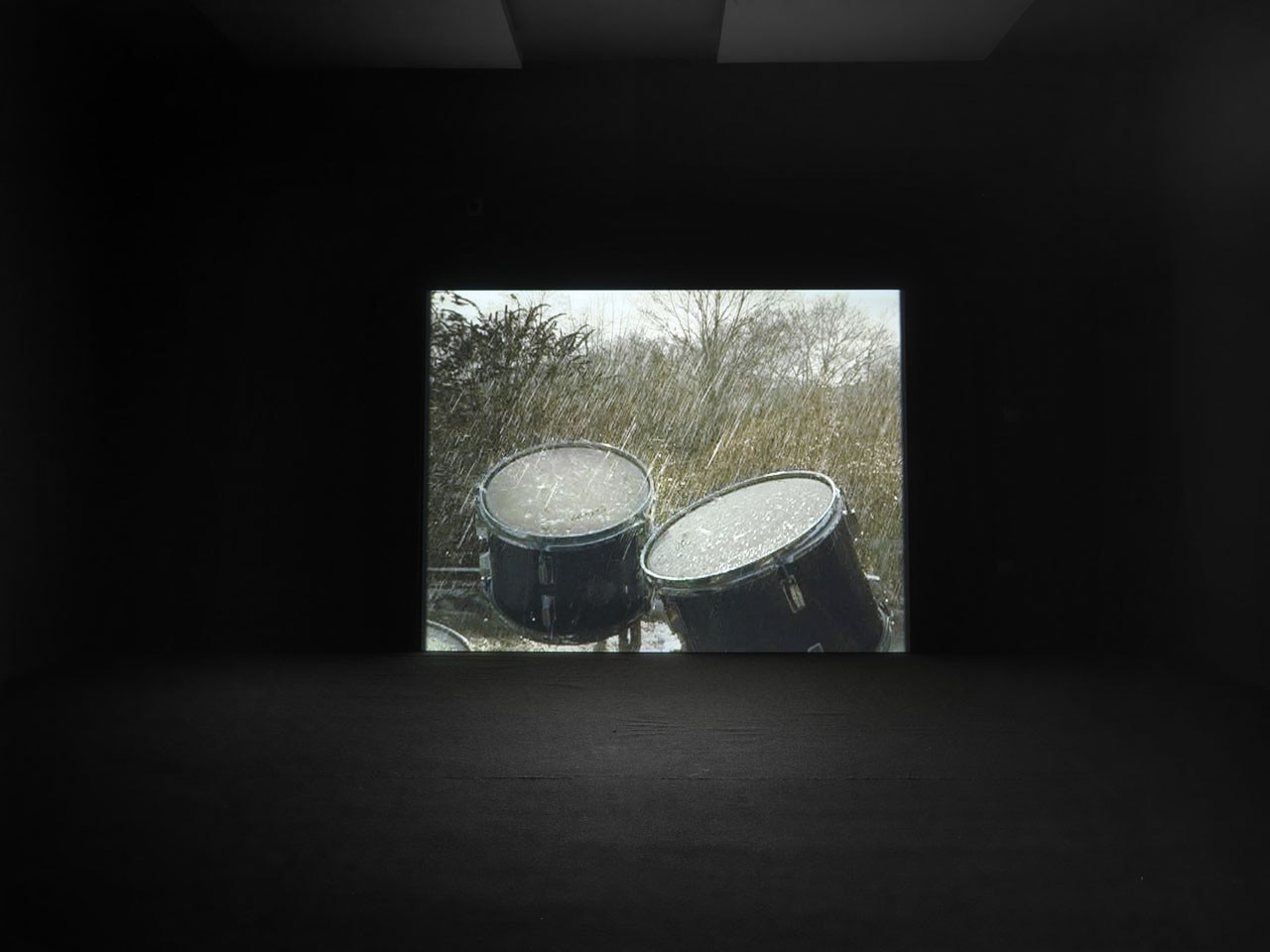
Unti 10 October 2014
Borderline
Art Space Pythagorion
Samos, Greece

